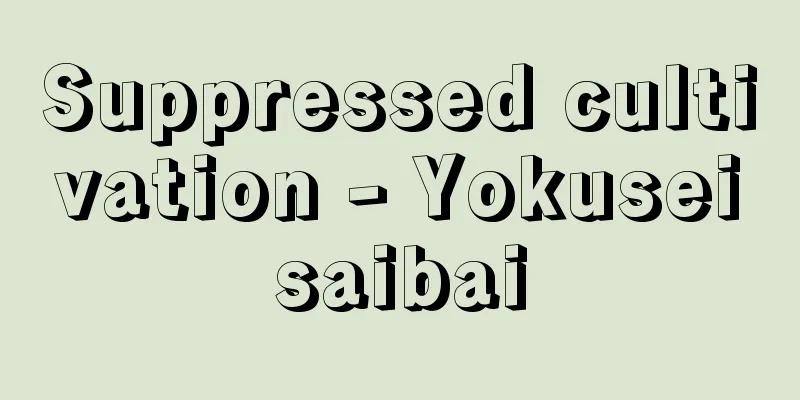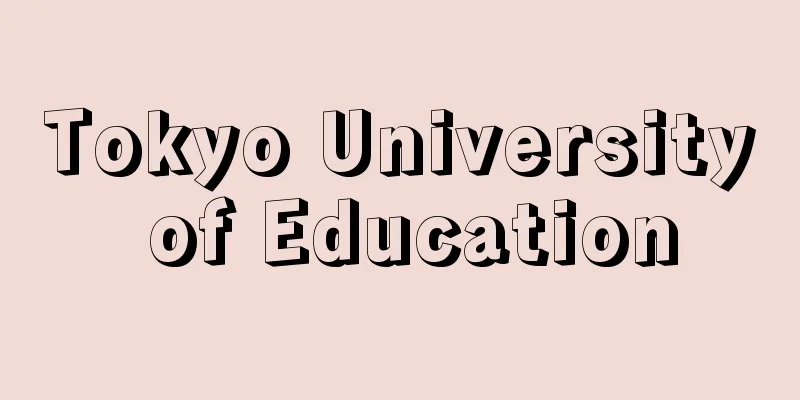Suppressed cultivation - Yokuseisaibai

|
This refers to a cultivation method that allows crops to be harvested and shipped later than their normal harvest and shipping period. It is particularly used in horticulture, such as vegetables and flowers, and, along with forcing cultivation, is useful for extending the supply period of those crops. The most common example is the delayed cultivation of summer vegetables, especially fruit vegetables such as tomatoes and cucumbers, in mountain highlands. In flat areas, it is too hot in midsummer, so shipments from early autumn are in short supply. However, in highland areas, they grow well in midsummer and are shipped from early autumn, so there is strong market demand and they are sold at high prices. Also, in the warm areas of western Japan, delayed cultivation of autumn vegetables is practiced in preparation for winter, when shipments of autumn vegetables are in short supply. Autumn-sown cucumbers are covered in vinyl greenhouses from early winter and shipped in December or January, and cabbage is sown in summer and autumn, and kept in warm open fields through the winter, before being shipped in the off-season from March to April. For flowers (such as chrysanthemums), special techniques are used such as delaying the formation of flower buds through electric cultivation, keeping the greenhouses warm from autumn, and shipping them at the peak demand time of the year from the end of the year to the New Year. In addition, retarded cultivation is used in combination with forcing and normal cultivation to crossbreed plants with different flowering periods. [Hoshikawa Kiyochika] [Reference] |Source: Shogakukan Encyclopedia Nipponica About Encyclopedia Nipponica Information | Legend |
|
作物の正常の収穫・出荷時期よりも遅く収穫・出荷するための栽培法をいう。とくに野菜・花など園芸で行われ、促成栽培とともにその作物の供給期間を長くすることに役だてられている。もっとも普通にみられるものは、山間高冷地での夏野菜とくにトマト、キュウリなど果菜類の抑制栽培である。平坦(へいたん)地では真夏は暑すぎて秋口からの出荷は品薄になる。しかし高冷地では真夏によく生育し、秋口から出荷されるので、市場の需要も強く、高価に販売される。また秋野菜が出荷薄となる冬に向けて、西日本暖地で秋野菜の抑制栽培が行われる。秋播(ま)きキュウリを初冬からはビニルハウスで覆って12~1月に出荷する、キャベツを夏秋播きして冬期も温暖な露地で過ごさせて3~4月の端境期に出荷するなどである。花(キクなど)では電照栽培により花芽のつきを遅らせ、秋からはハウス保温して暮れから正月の需要の多いときに出荷するなどの特殊なくふうも行われている。また抑制栽培は、促成・普通栽培と組み合わせて、開花期の異なる植物を交配する育種にも利用されている。 [星川清親] [参照項目] |出典 小学館 日本大百科全書(ニッポニカ)日本大百科全書(ニッポニカ)について 情報 | 凡例 |
Recommend
Andrei Yur'evich Bogolyubskii
1111-74 Prince of Vladimir and Suzdal, Russia. Rei...
Energy Band
…However, when many atoms or molecules come toget...
Goodyera foliosa (English spelling) Goodyerafoliosa
… [Ken Inoue]. … *Some of the terminology that me...
Motalaalva (English spelling)
…It is a lake formed about 10,000 years ago on th...
Khalihl Maṭrān
1872‐1949 Arab poet. He is called the "Poet o...
Local Public Servants Act - Chiho Koumuinho
This is a general and fundamental law that applie...
Dranse
The Rhône flows into the lake from the eastern pa...
Five Remarks - Gokan (English spelling) Wǔ jiàn
Five ways to admonish a monarch in China. In an au...
Appearance theory - Gaikanriron
…It refers to the legal appearance in the German ...
ERM - Emergency Response Management
It is a method of crisis management. It is an abb...
Subluxation
…Dislocations are classified as traumatic, congen...
Stieltjes, TJ (English spelling)
...This integral was defined by T. J. Stieltjes (...
Public investment - koukyoutoushi
This is an investment activity conducted by the c...
"Pictures and Countryside Words" - Egotohigen
…Nishikawa Sukenobu's "Painting and Colo...
Oki Province - Okinokuni
The former name of the islands that lie in the Se...









